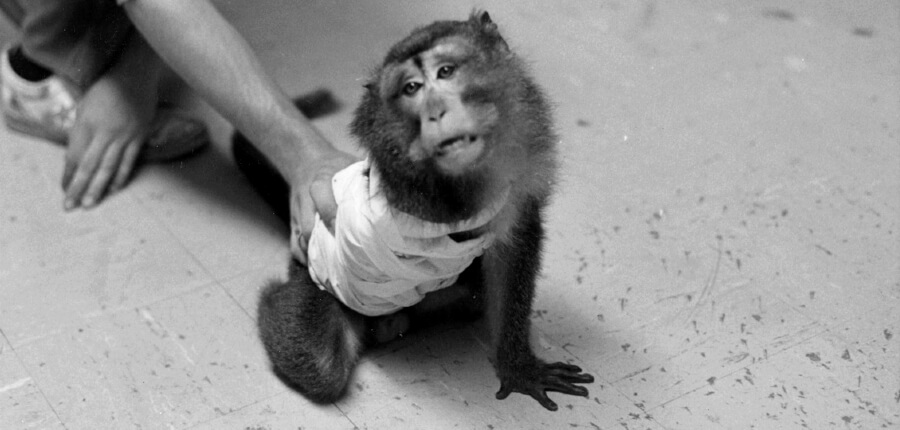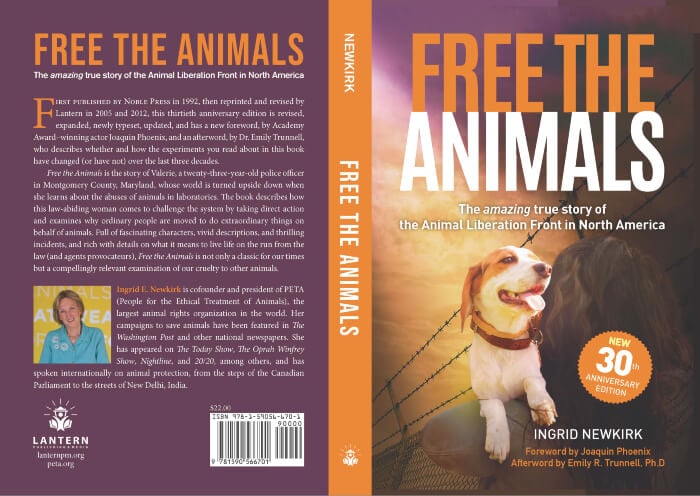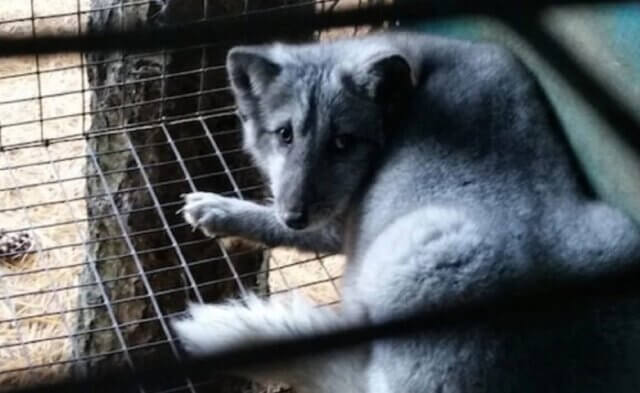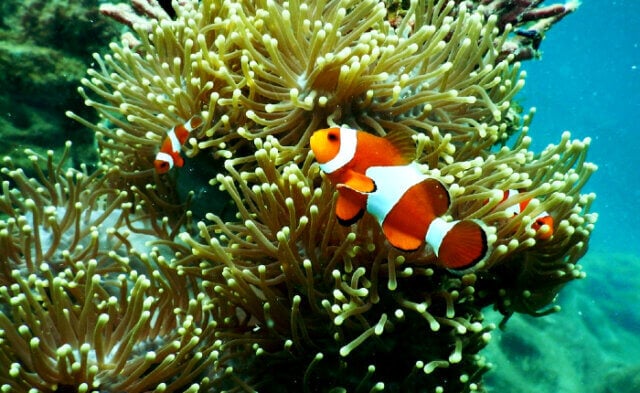Please enjoy this article from the latest issue of our magazine, PETA Global, and adapted from PETA President Ingrid Newkirk’s book Free the Animals. To begin your PETA Global subscription, become a member today!
She doesn’t look like a gangster or sound like a fanatic, although she founded the most notorious animal rights organization in America – the Animal Liberation Front. I shall call her Valerie, although that is not her real name. I met her in conjunction with a police raid carried out on September 11, 1981, on the Institute for Behavioral Research (IBR), a dingy warehouse laboratory in Silver Spring, Maryland, run by a psychologist and monkey experimenter named Edward Taub. The trial and other events that followed came to be known as the case of the Silver Spring monkeys.
Hours earlier, acting on a tip, ABC’s wildlife correspondent, Roger Caras, had been dispatched to Washington, D.C. He and his camera crew hid outside the back door of IBR.
When Caras saw the “black-and-whites,” all lit up like Christmas trees, materializing in near-silence, he gave the high sign and out came the cameras. With the officers came a team of deputized civilians with talents not often sought after by the police: a primate behaviorist, a veterinary technician, humane officers, and animal handlers. One was the chief police witness, someone from PETA who had spent four months in the laboratory.
A warrant signed the previous day by Circuit Court Judge John McAuliffe directed the police and their helpers to seize 17 macaque monkeys, some with infected wounds, as well as any and all evidence of violations of Maryland law prohibiting cruelty to animals. Officers also discovered dozens of dead monkeys floating in a formaldehyde-filled barrel, and they saw that on his desk, “the mad doctor” had used a monkey’s severed hand as an ashtray.
Seventeen cages were lifted out of that dark building into the sunshine – they contained pathetic little creatures slightly over a foot tall, with bandaged arms or exposed, torn flesh, looking dazzled as they blinked toward the sun. The reporter explained that this was the primates’ first glimpse of natural light and their first breath of fresh air since their capture in the Philippine jungles years earlier. Then off they went, whisked away in a rented truck bearing a handmade sign reading, “People for the Ethical Treatment of Animals (PETA).”
The assistant state’s attorney assigned to prosecute the case was fresh out of school, insecure, and inexperienced. His nervousness and the pressure he was getting from the research community showed. He had been almost incoherent in his arguments before the judge.
For the defense, IBR’s three expensive lawyers had argued forcefully for the monkeys’ return to the laboratory. The court ruled that the animals were Dr. Taub’s possessions and he was entitled to claim them.
Taub told the reporters outside the courthouse that he was going to perform a second surgery and then kill the monkeys 10 days later.
Valerie didn’t see what she could do. She was a cop, not a judge. But her friend Mikaya, an animal control officer, had an idea: “We are going to drive those monkeys out of here tonight.”
“Oh, Christ. I’m not a bus driver, I’m a cop, Mikaya.” Valerie felt annoyed, flattered, miserable, angry, and like a failure all at once. Her naïve illusions about animal experiments had been shattered by the horrors uncovered. She was growing angrier and angrier at what she now knew happened, in the name of science, to millions of animals like Chester, Billy, and the other monkeys, but what Mikaya was asking was out of the question. Or was it?
Mikaya looked at her solemnly. “All we need is for you to park your pretty cruiser on the street. If another cop comes by, it’ll look like we’re legally moving them. Those animals need our help. They’ve been through enough horror and misery and pain for one lifetime.” Valerie knew she had to make the toughest decision of her life – a decision that could alter the course of the monkeys’ lives and of hers. And that’s how the Silver Spring monkeys came to find themselves on their way to Florida.
Read the rest of Valerie’s story in Free the Animals. Pre-order your copy of the 30th Anniversary Edition today!
Full of fascinating characters, vivid descriptions, thrilling incidents, and rich with details on what it means to live life on the run from the law (and agents provocateurs), Free the Animals is not only a classic for our times but a compellingly relevant examination of our cruelty to other animals.
“Yes, Free the Animals is about the balaclava-wearing heroes who break windows and laws to save animals, but it’s also about everyone. It’s a call to us all to take action, to adopt rescued animals, to protest against animal experiments, to shun foods derived from animals, to lobby for laws that protect animals, and to urge retailers to stop selling animals’ skin, fur, feathers, and wool.”
– Joaquin Phoenix, from his foreword to the new edition
“Free the Animals takes us to the front lines of the movement for the nineties and gives us insight into what makes the world’s newest freedom fighters tick.”
– Chrissie Hynde, who wrote the introduction
“A moving story about extreme cruelty and extreme courage and an inspirational and practical guide for anyone bent on challenging the system.”
– Oliver Stone






